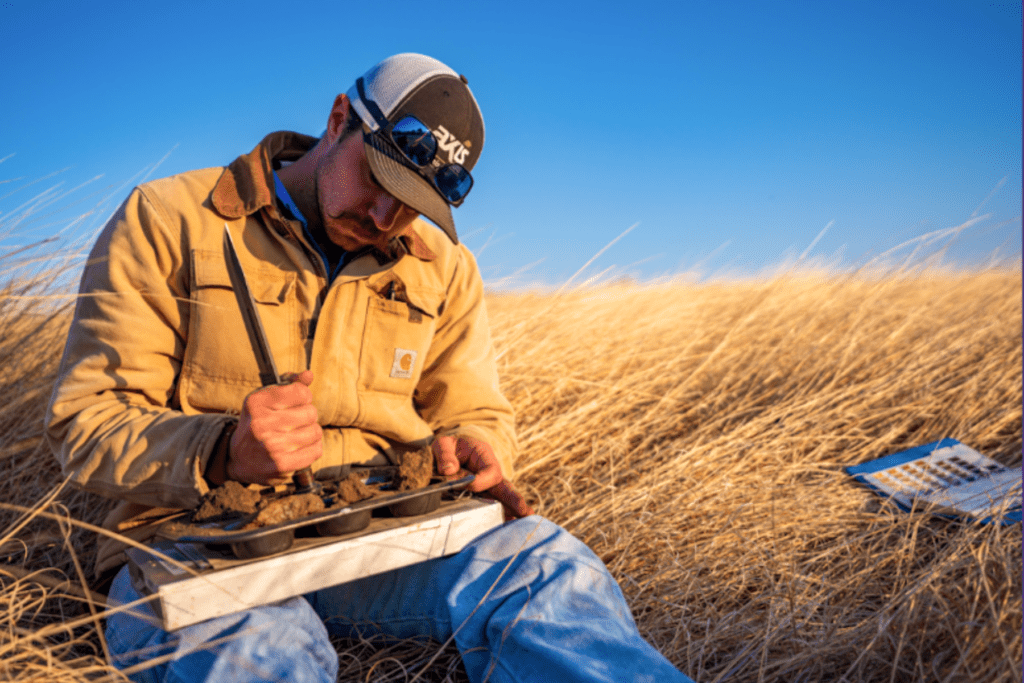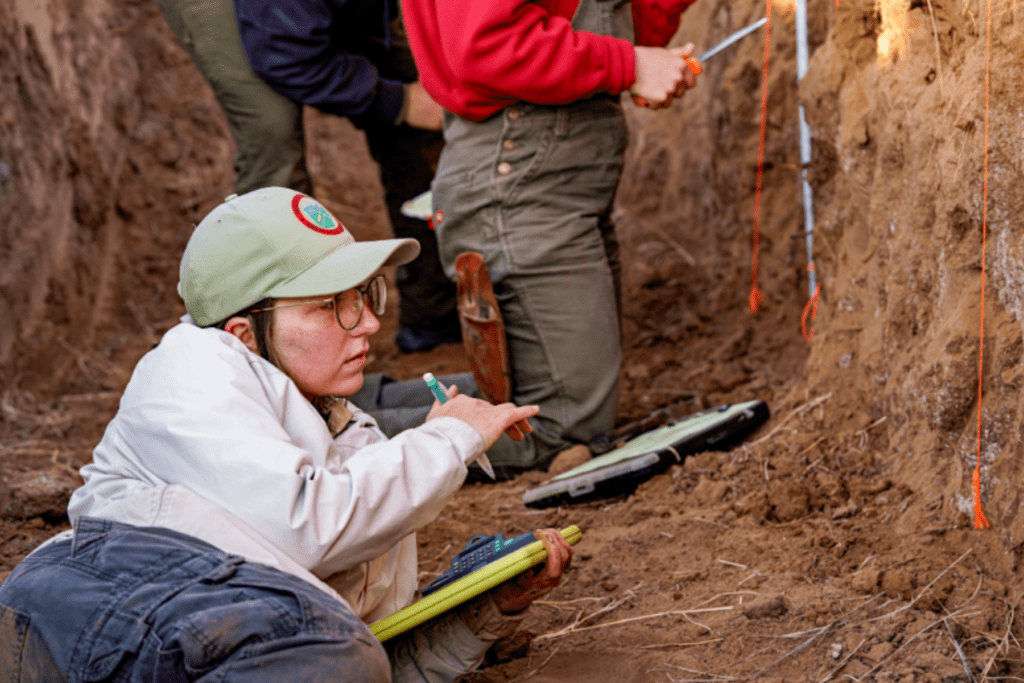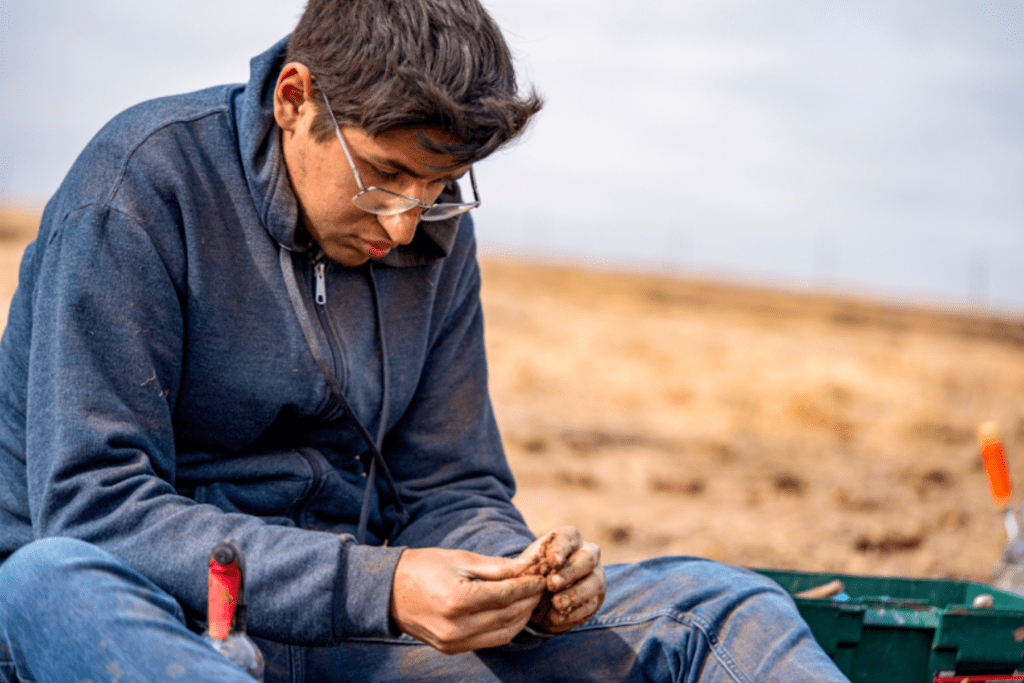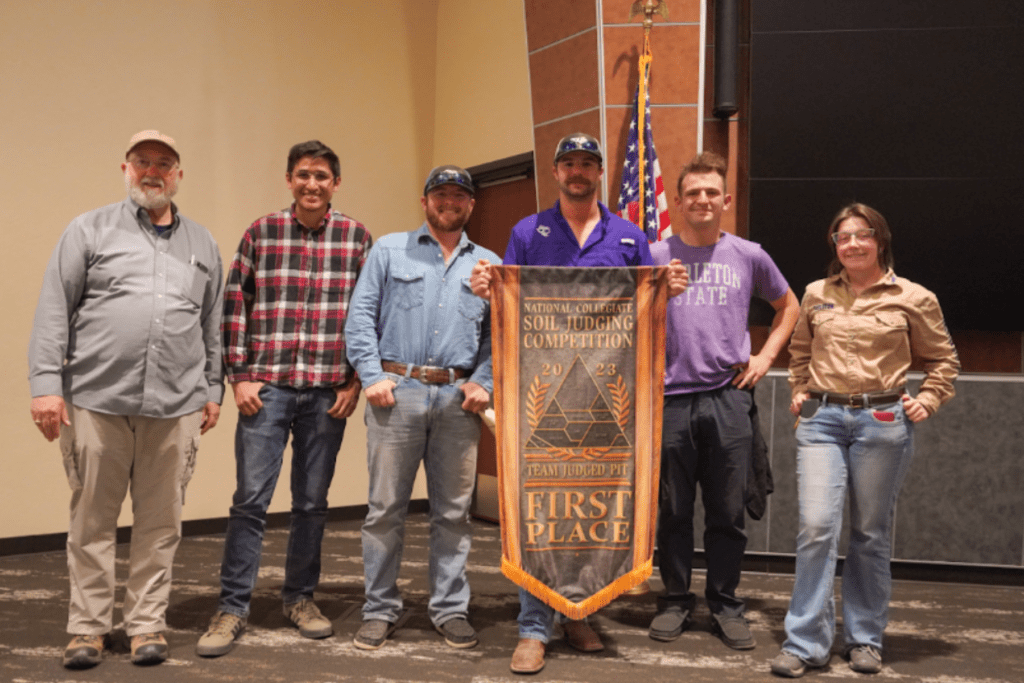The Texan Soil Whisperers returned to Woodward, Oklahoma to compete in the National Collegiate Soil Judging Competition after their victory at the Region IV Collegiate Soil Judging Competition—both hosted by Oklahoma State University. Last October, the Soil Whisperers placed 2nd in the Team Pit and 3rd overall which solidified their spot to once again compete in the National round for the second year in a row.
The competition is graded in two portions: an individually judged portion and a team judged portion. The individually judged portion is composed of three soil pits where each judger independently describes the soil profile according to a scorecard given by the host. Four students’ scores, with the lowest score at each pit dropped, are added together with the team pit score, which up to 10 students can participate in, to tabulate the overall score. However, students that are not graded towards the overall score still participate in alternate pits. Awards are given for the top 5 individual scores, top 5 alternate scores, top 3 team scores, and top 3 overall scores. Those with the top individual scores additionally are qualified to participate in the International Soil Judging Competition to represent Team USA. The Regional and National competitions are part of the organization called Students of Agronomy, Soils, and Environmental Sciences, or SASES, and is the undergraduate program of the American Society of Agronomy (ASA), Crop Science Society of America (CSSA) and Soil Science Society of America (SSSA). Consequently, these competitions are created by the most revered agricultural institutions in the USA.
Soil judging is learning how to train your eyes to see the fine intricacies found on and within every soil ped while also listening to the landscape and geology tell you the history of how the soil was created and how it will act in the future. Soil judgers must name and ascribe depths to each horizon, texture each horizon according to the USDA Soil Textural Triangle, color match each horizon using a Munsell color book, shoot the slope of the land around the pit, determine hydrological, erosional, and engineering interpretations based on the above findings, and finally name the soil pedon based on the immensely expansive and specific Soil Taxonomy.
Universities around the country gathered in Woodward, OK to prove their proficiencies in these above skills; overall 23 universities competed, and 154 students participated. Dr. Donald McGahan coached the Texan Soil Whispers team numbering five: Joseph Avila, Klayton Morriss, Daniel Pavelka, Courtney Thom, and Austin Wildman.
The Texan Soil Whisperers judged practice soil pits, 13 in total, from sunrise March 26th until sunset March 29th. The competition was split into two days; individual held on March 30th and team held on March 31st. Despite everything—the 30 to 45 mph winds, the eolian sand blown in their faces, and the intense pressure that comes with a national competition–the Texan Soil Whisperers placed 1st in the Team Pit. Tarleton State University placed 12th overall. These accomplishments can be owed to the wealth of knowledge Dr. McGahan has shared with his students, the support of the Department of Agriculture and Natural Resources, and the comradery innate within the Tarleton spirit.



